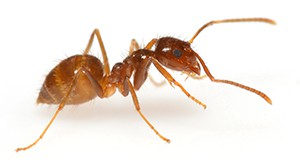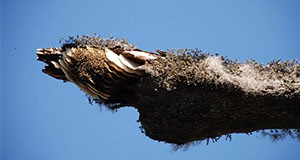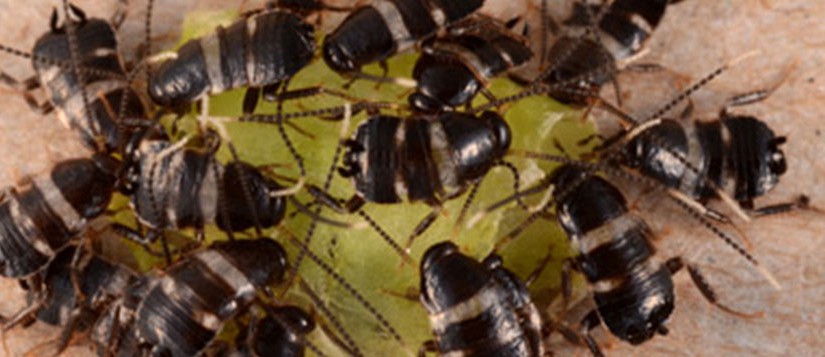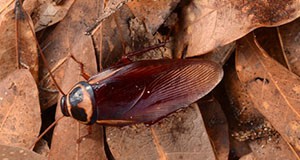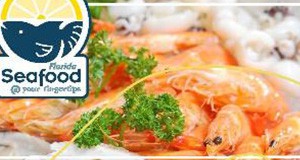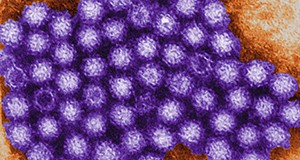
If you have ever had the stomach flu, norovirus was likely the culprit. Norovirus is the most common cause of foodborne illness in the United States and is transmitted through direct person-to-person contact or contaminated objects and food. This 5-page fact sheet covers how norovirus is spread, foods associated with norovirus, symptoms of infection, who is at risk, as well proper sanitation methods for preventing the spread of norovirus. Written by Rachael Silverberg, Melissa K. Jones, Renée Goodrich Schneider, Aswathy Sreedharan and Keith R. Schneider, and published by the UF Food Science and Human Nutrition Department, June 2015.
http://edis.ifas.ufl.edu/fs129
Category: Families & Consumers
Basics of the National Flood Insurance Program

Established by Congress in 1968 because the private market stopped offering flood insurance, the NFIP provides federally backed flood insurance to property owners in participating communities. This 10-page fact sheet covers topics such as: why buy flood insurance, recent changes, flood zones and insurance rate maps, ways to reduce premiums, rate increases for pre-1974 structures, and actions communities can take to lower citizen premiums related to climate change and sea-level rise. Written by Thomas Ruppert and published by the UF Department of Sea Grant, July 2015.
http://edis.ifas.ufl.edu/sg139
Eight Steps to Developing a Simple Marketing Plan

Marketing is an essential component of any business, including agriculture. Despite the important role of marketing, many smallholding operators/growers are reluctant to create a marketing plan. This 5-page fact sheet provides a rationale for developing a marketing plan, a step-by-step process for creating one, and a marketing plan worksheet. Written by Edward A. Evans and Fredy H. Ballen, and published by the UF Department of Food and Resource Economics, August 2015. (Photo credit: iStock/Thinkstock)
http://edis.ifas.ufl.edu/fe967
Using the Decision-Ade(TM) Segmentation Strategy to Better Understand Extension Audiences

Decision-Ade™ is a tool Extension can use to better understand how residents with a range of household budgets feel about their utility bills. Analyzing households in terms of both income and utility bill “botheredness” creates a more comprehensive picture of that household’s utility use and its willingness to modify utility consumption relative to other households. This 5-page fact sheet uses survey data of Florida residents to demonstrate the insights Decision Ade™ can provide and how those insights can inform Extension programming. Written by Randall Cantrell, Laura Warner, Joy Rumble, and Alexa Lamm, and published by the UF Department of Family, Youth and Community Sciences, July 2015.
http://edis.ifas.ufl.edu/fy1461
Food and Fitness: Myths and Truths

Do you know how much water you should drink before exercise? Does loading up on carbs before a strenuous cardio workout improve performance? This 6-page fact sheet debunks some common myths about nutrition and fitness and offers other helpful advice for those who wish to stay active and eat a healthy diet. Written by Linda B. Bobroff and Amy Mullins, and published by the UF Department of Family, Youth and Community Sciences, June 2015.
http://edis.ifas.ufl.edu/fy470
Seguridad Alimentaria: Crucigrama de alimentos do alto riesgo
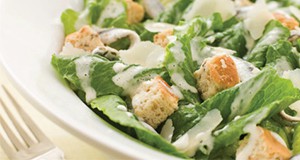 Algunos alimentos pueden causar más enfermedades alimentarias que otros. La leche ó jugos no pasteurizados no son seguros para consumir. Alimentos que no han sido cocinados, como lo son los huevos crudos ó a medio cocinar son particularmente riesgosos.
Algunos alimentos pueden causar más enfermedades alimentarias que otros. La leche ó jugos no pasteurizados no son seguros para consumir. Alimentos que no han sido cocinados, como lo son los huevos crudos ó a medio cocinar son particularmente riesgosos.
This 2-page fact sheet is the Spanish language version of Food Safety: High-Risk Foods Crossword. Written by Jennifer Hillan and Linda B. Bobroff, and published by the UF Department of Family Youth and Community Sciences, June 2015. (Photo Credit: Catherine Yeulet/iStock/Thinkstock)
http://edis.ifas.ufl.edu/fy1170
Contaminantes en el Medio Ambiente Urbano: Los Perfluoroalquilos
 Los perfluoroalquilos–los perfluorocarbonos (PFC) o, en inglés, perfluoroalkyl substances (PFASs)–son los productos químicos artificiales más comunes y persistentes en el planeta. Algunos de los productos más comunes que contienen perfluoroalquilos son sartenes de teflón, utensilios de cocina antiadherente, chaquetas impermeables (como Gore-Tex), espumas de extinción de incendios, envases de alimentos, alfombras y telas para muebles. Los perfluoroalquilos poseen un largo tiempo de residencia en el medio ambiente, lo que significa que los perfluoroalquilos pueden acumularse en los organismos en niveles que causan efectos nocivos.
Los perfluoroalquilos–los perfluorocarbonos (PFC) o, en inglés, perfluoroalkyl substances (PFASs)–son los productos químicos artificiales más comunes y persistentes en el planeta. Algunos de los productos más comunes que contienen perfluoroalquilos son sartenes de teflón, utensilios de cocina antiadherente, chaquetas impermeables (como Gore-Tex), espumas de extinción de incendios, envases de alimentos, alfombras y telas para muebles. Los perfluoroalquilos poseen un largo tiempo de residencia en el medio ambiente, lo que significa que los perfluoroalquilos pueden acumularse en los organismos en niveles que causan efectos nocivos.
This 6-page fact sheet is the Spanish language version of Contaminants in the Urban Environment: Perfluoroalkyl Substances, written by Ignacio A. Rodriguez-Jorquera and Gurpal S. Toor, and published by the UF Department of Soil and Water Science, June 2015.
http://edis.ifas.ufl.edu/ss644
Feature image credit: iStock/Thinkstock.com (non-stick pan, waterproof fabric, and fire fighting foam)/Digital Vision/Thinkstock.com (fast food)
A Sand Fly Lutzomyia longipalpis (Lutz and Neiva) (Insecta: Diptera: Psychodidae: Phlebotominae)
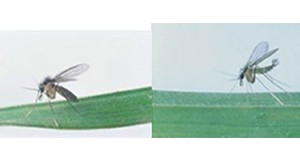 The true sand flies are densely covered with setae, have long slender legs, and broad and pointed wings that are held erect at rest. Several phlebotomine species are vectors of the protozoan parasites in the genus Leishmania, that are the causal agents of leishmaniasis. Visceral leishmaniais is the most severe form of the disease, and is fatal to the human or dog host if untreated. This 6-page fact sheet was written by Maria C. Carrasquilla and Phillip E. Kaufman, and published by the UF Department of Entomology and Nematology, June 2015. (Photo credit: Cristina Ferro, Instituto Nacional de Salud, Colombia
The true sand flies are densely covered with setae, have long slender legs, and broad and pointed wings that are held erect at rest. Several phlebotomine species are vectors of the protozoan parasites in the genus Leishmania, that are the causal agents of leishmaniasis. Visceral leishmaniais is the most severe form of the disease, and is fatal to the human or dog host if untreated. This 6-page fact sheet was written by Maria C. Carrasquilla and Phillip E. Kaufman, and published by the UF Department of Entomology and Nematology, June 2015. (Photo credit: Cristina Ferro, Instituto Nacional de Salud, Colombia
http://edis.ifas.ufl.edu/in1091
Positive Discipline: Behavioral Management Skills for Parents and Teachers, Part 3: Fostering the Parent-Child and Teacher-Student Relationship to Build Responsibility
Tell me and I forget,
Teach me and I may remember,
Involve me and I learn.
The general goal of healthy parenting and teaching is to produce children and students who can think critically, make good decisions, and become independent, accountable, responsible, and contributing members of society. Part 3 of this Positive Discipline: Behavioral Management Skills for Parents and Teachers series covers tips and strategies to help parents and teachers build critical thinking and positive behavioral skills in children. Several of these strategies that can help parents and teachers achieve these goals through “love and logic” are discussed in this 6-page fact sheet written by Victor Harris, Whitney Fung, Sarah Ellis, and Alison Schmeer, and published by the UF Department of Family Youth and Community Sciences, July 2015. (Photo Credit: Thinkstock.com/iStock/natasaadzic)
http://edis.ifas.ufl.edu/fy1460
Positive Discipline: Behavioral Management Skills for Parents and Teachers, Part 2: General Approaches to Managing Behavior
When a child is locked in the bathroom
With water running
And he says he is doing nothing
But the dog is barking,
Call 911.
–Erma Bombeck
Research indicates that there must be at least an 8-to-1 positive-to-negative interaction ratio for parents and teachers to have a positive relationship with their children and students. Put simply, both verbal and non-verbal communication needs to be generally positive. Learning how to steer a child or a student toward managing his or her own behavior in healthy ways requires both knowledge and skills that make it easy to have positive interactions and behavior change. This 6-page fact sheet will help you identify specific approaches to successfully managing appropriate and inappropriate behavior at home and in the classroom. It outlines four principles of behavior management, and describes several strategies before providing a practice activity. Written by Victor Harris, Whitney Fung, Sarah Ellis, and Alison Schmeer, and published by the UF Department of Family Youth and Community Sciences, July 2015. (Photo Credit: Thinkstock.com/Jupiterimages/Creatas Images)
http://edis.ifas.ufl.edu/fy1459
Positive Discipline: Behavioral Management Skills for Parents and Teachers, Part 1: Types of Misbehaviors and Keys to Success
“Before I got married I had six theories about bringing up children; now I have six children, and no theories.” — John Wilmot
Parents and teachers often experience a lot of insecurities, especially with regard to helping children manage their own behaviors. Not surprisingly, there are many similarities in the skills that effective parents and teachers use to help children manage their own behavior successfully. Building a foundation for healthy and effective parenting and teaching begins with understanding some different types of misbehaviors. This 4-page fact sheet discusses four common types of misbehaviors, encourages the reader to identify healthy and unhealthy practices, and continues with key factors of effective parenting and teaching. Written by Victor Harris, Whitney Fung, Sarah Ellis, and Alison Schmeer, and published by the UF Department of Family Youth and Community Sciences, July 2015. (Photo credit: Thinkstock.com/iStock)
http://edis.ifas.ufl.edu/fy1458
Volunteer Training Series: 4-H Cloverbuds Program: 4-H for Younger Members
 Florida 4-H programs offered to children ages 5 to 7 are called 4-H Cloverbud programs and are a component of the Florida 4-H Youth Development Program. The goal of the Florida 4-H Cloverbud program is to offer age-appropriate, fun, and exploratory learning experiences for children in the 5 to 7 age group. This 5-page fact sheet describes the best management practices 4-H faculty and volunteers should use when teaching and interacting with this age group. Written by Amanda Squitieri and Sarah Hensley, and published by the UF Department of 4-H Youth Development, July 2015.
Florida 4-H programs offered to children ages 5 to 7 are called 4-H Cloverbud programs and are a component of the Florida 4-H Youth Development Program. The goal of the Florida 4-H Cloverbud program is to offer age-appropriate, fun, and exploratory learning experiences for children in the 5 to 7 age group. This 5-page fact sheet describes the best management practices 4-H faculty and volunteers should use when teaching and interacting with this age group. Written by Amanda Squitieri and Sarah Hensley, and published by the UF Department of 4-H Youth Development, July 2015.
http://edis.ifas.ufl.edu/4h369
Lionfish: Is It Safe to Eat?
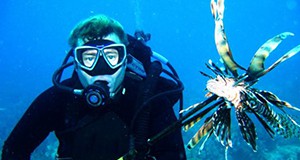
Lionfish is not a traditional or likely seafood selection, but growing interest in response to the invasive and increasing abundance has stirred recreational and commercial interest. This prolific, invasive fish is threatening reefs and coastal fisheries in ocean waters throughout the Caribbean Seas and neighboring regions, and eating lionfish is being encouraged as one of the best options to mitigate the its harmful impact. This 4-page fact sheet discusses the risks in handling and consuming lionfish, and offers recommendations for avoiding risk, for both recreational and commercial harvesters. Written by Steve Otwell, and published by Florida Sea Grant, April 2015.
http://edis.ifas.ufl.edu/sg135
Contaminants in the Urban Environment: Dioxins
 Dioxins are among the most toxic chemicals on the earth. They are by-products of a number of human activities such as combustion of fuels and wastes containing polyvinyl chloride (PVC), chlorine bleaching of paper products, and selected industrial processes. Current releases of dioxins by humans are due to the combustion of fuels and burning of household trash. The good news is that levels of dioxins in the environment have decreased in the United States throughout the past 30 years due to the improved emission controls and regulatory activities. But dioxins break down slowly, so they remain in the environment for a long time and accumulate in the food chain. Long-term exposure to dioxins can harm immune system, nervous system, endocrine system, and reproductive functions. This 7-page fact sheet discusses the sources, emission trends, and impacts of dioxins as well as the ways to minimize exposure to dioxins. Written by Yun-Ya Yang and Gurpal S. Toor, and published by the UF Department of Soil and Water Science, July 2015.
Dioxins are among the most toxic chemicals on the earth. They are by-products of a number of human activities such as combustion of fuels and wastes containing polyvinyl chloride (PVC), chlorine bleaching of paper products, and selected industrial processes. Current releases of dioxins by humans are due to the combustion of fuels and burning of household trash. The good news is that levels of dioxins in the environment have decreased in the United States throughout the past 30 years due to the improved emission controls and regulatory activities. But dioxins break down slowly, so they remain in the environment for a long time and accumulate in the food chain. Long-term exposure to dioxins can harm immune system, nervous system, endocrine system, and reproductive functions. This 7-page fact sheet discusses the sources, emission trends, and impacts of dioxins as well as the ways to minimize exposure to dioxins. Written by Yun-Ya Yang and Gurpal S. Toor, and published by the UF Department of Soil and Water Science, July 2015.
http://edis.ifas.ufl.edu/ss642
Facts about Wildlife Diseases: Rabies
 Rabies is a virus carried by mammals. It kills infected humans and animals if they are not treated shortly after exposure. Rabies can be prevented, but it cannot be cured once symptoms become evident. This 6-page fact sheet explains how rabies spreads, which animals can get it, how common it is, symptoms, what you can do to limit its spread and what to do in case of a possible rabies exposure. Written by Samantha M. Wisely and Holly K. Ober, and published by the UF Department of Wildlife Ecology and Conservation, June 2015.
Rabies is a virus carried by mammals. It kills infected humans and animals if they are not treated shortly after exposure. Rabies can be prevented, but it cannot be cured once symptoms become evident. This 6-page fact sheet explains how rabies spreads, which animals can get it, how common it is, symptoms, what you can do to limit its spread and what to do in case of a possible rabies exposure. Written by Samantha M. Wisely and Holly K. Ober, and published by the UF Department of Wildlife Ecology and Conservation, June 2015.
http://edis.ifas.ufl.edu/uw282
Healthy Living: Diabetes
Diabetes is a serious health condition that occurs when a person’s body has difficulty making or using insulin, which results in high blood glucose (blood sugar) and can lead to other complications. This 3-page facts sheet covers the effects of high blood glucose, who is at risk, the symptoms and management of the condition, and additional resources for those with or at risk of developing diabetes. Written by Linda B. Bobroff, Karla P. Shelnutt, and Paulina Wittkowsky, and published by the UF Department of Family Youth and Community Sciences, June 2015.
http://edis.ifas.ufl.edu/fy078
Tawny Crazy Ant
As of 2012, tawny crazy ants have invaded 24 counties in Florida, parts of southeast Texas, and other areas of the southeastern U.S. The tawny crazy ant is considered a series pest. This species infests buildings and greenhouses, attacks crops, domestic animals, honeybee hives, displaces native ant species, and disrupts electrical equipment. This 3-page fact sheet covers the tawny crazy ant’s distribution, description, colonies, feeding habits, and pest status and control. Written by S. K. Hill, R. W. Baldwin, R. M. Pereira, and P. G. Koehler, and published by the UF Department of Entomology and Nematology, October 2013.
http://edis.ifas.ufl.edu/in1076
African Honey Bee: What You Need to Know
African honey bees entered the United States in the early 1990s and have since spread throughout the Southwest and Southeast, including parts of Florida. Compared to European bees, African bees are highly aggressive when disturbed and are more likely to sting humans and animals. This 6-page fact sheet covers the history and distribution of African honey bees in the Americas and explains how beekeepers and residents can manage their interactions with these bees. Written by H. Glenn Hall, Catherine Zettel-Nalen and James D. Ellis, and published by the UF Department of Entomology and Nematology, December 2014. http://edis.ifas.ufl.edu/mg113
Australian cockroach Periplaneta australasiae Fabricius (Insecta: Blattodea: Blattidae)
Australian cockroaches are the most common outdoor cockroach in southern Florida. Though they typically stay outdoors, Australian cockroaches may also venture inside and live among humans. This 4-page fact sheet covers the Australian cockroach’s distribution and habitat, biology, medical risks to humans, and management as a pest. Written by Shiyao Jiang and Phillip E. Kaufman, and published by the UF Department of Entomology and Nematology, April 2015.
http://edis.ifas.ufl.edu/in1088
Seafood Knowledge, Perceptions, and Use Patterns in Florida: Findings from a 2013 Survey of Florida Residents
Over the past few years, consumers have begun to pay more attention to the nutritional benefits, sustainability, and environment impact of consuming seafood. However, media coverage of these concerns may leave consumers confused and uncertain about how they should incorporate seafood into their diets. In 2013, a survey was conducted to better understand Florida seafood consumer preferences, perceptions, and concerns. This 4-page fact sheet explains the survey’s findings and how they might help Extension deliver effective seafood-based education to Florida residents. Written by Lisa Krimsky, Charles Adams, and Bryan Fluech, and published by the UF Department of Food and Resource Economics, May 2015. http://edis.ifas.ufl.edu/fe965




